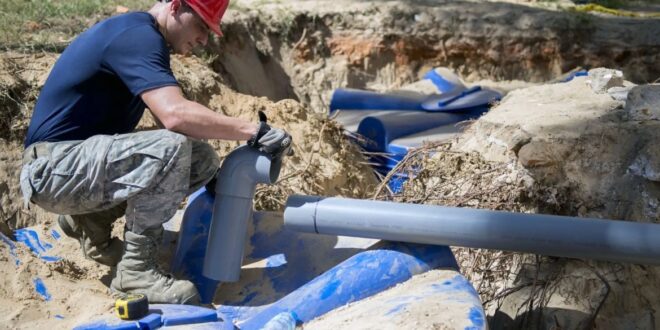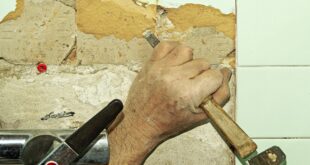Water lines are the silent workhorses of our homes. They transport vital water to our taps, showers, and appliances, ensuring our daily chores run without a hitch. However, like all infrastructure, they aren’t immune to wear and tear.
Facing a water line replacement can be daunting, leaving homeowners often feeling overwhelmed by the prospect. This article aims to be your guide, helping you navigate the complexities of this crucial home improvement journey.
Why Water Line Replacement is Essential
It’s easy to take our water supply for granted until it’s compromised. Old or damaged water lines can lead to a series of problems. Water discoloration is often the first sign, signaling rust or contaminants.
Reduced water pressure can indicate blockages or breaks. Persistent damp spots might point to leaks. Beyond the immediate inconveniences, there’s a graver concern: health. Damaged lines can let in contaminants, making the water unsafe for consumption.
Best Practices for Homeowners
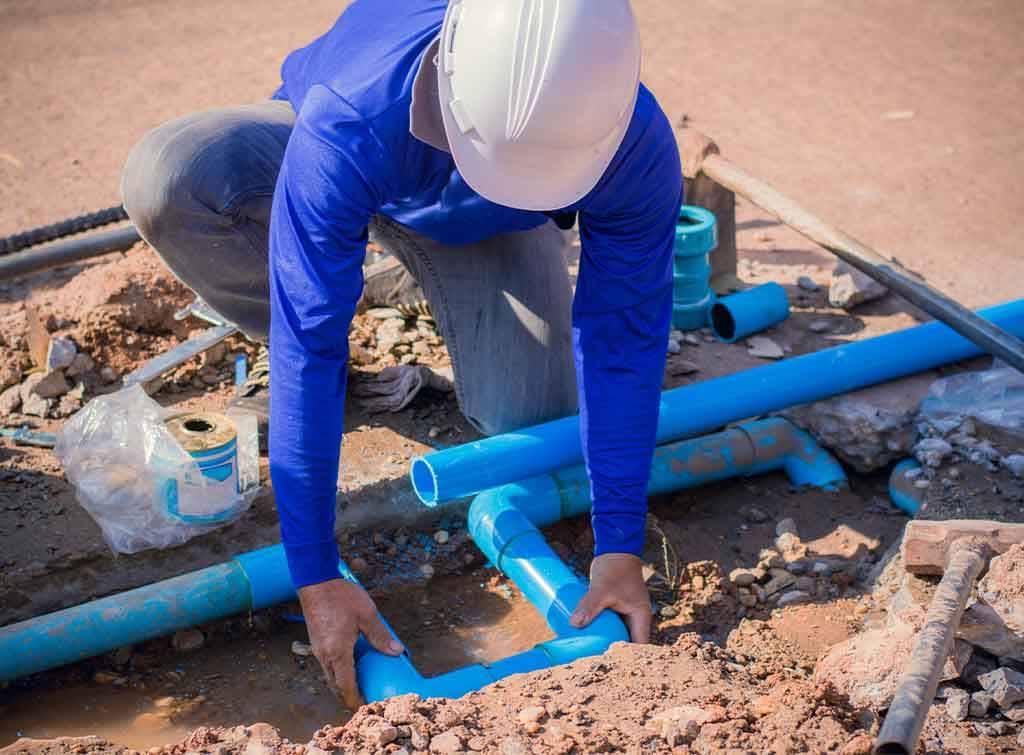
When facing water line replacement, knowledge is power. Recognizing early signs like discoloration, erratic water pressure, or persistent damp spots can save on extensive damages later. When the time comes, thoroughly vet your plumbing service.
Seek reviews, ask about their experience, and ensure they offer a solid warranty. Understanding your home’s layout and the local regulations can also aid in smoother communication with the professionals. After replacement, invest in regular maintenance. Annual inspections can catch potential issues before they escalate.
Factors Affecting the Cost of Water Line Replacement
Understanding the factors that impact the cost can help homeowners budget effectively:
Size and Length
Naturally, larger diameter pipes or extensive replacement lengths will cost more. The more material and labor required, the higher the expense.
Material Choices
Each material has its merits. PVC is cost-effective and resistant to corrosion. Copper, while pricier, offers durability. PEX is flexible and quick to install but might be pricier than PVC. Your choice will depend on your home’s needs and budget.
Geography
Location matters. Urban areas with a higher cost of living can mean pricier plumbing services. Additionally, local regulations might necessitate specific procedures or materials, affecting costs.
Additional Work
A straightforward replacement is one thing. If your yard needs significant excavation, or if pathways and driveways need restoration afterward, these add to the overall cost.
The Replacement Process ─ Step-by-Step
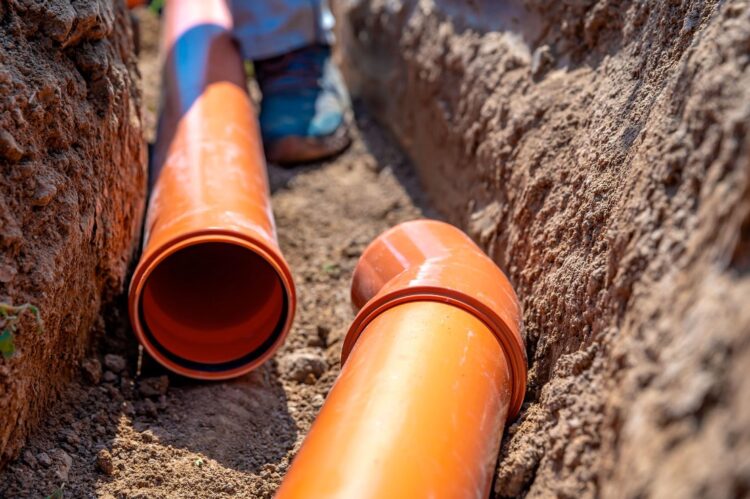
Navigating the replacement process requires understanding each phase:
- Initial inspection ─ This foundational step involves experts examining your water line, pinpointing issues, and suggesting solutions.
- Method choice ─ Traditional excavation involves digging up the old line and replacing it. Trenchless techniques, like pipe bursting or relining, are less invasive but might cost more upfront. However, they could save on restoration costs later.
- Preparation ─ Armed with information from the inspection, homeowners can prepare. This might involve relocating plants, informing neighbors about potential disruptions, or planning alternative water sources during the process.
- Replacement ─ This is the crux. Old segments are removed and replaced with new ones, ensuring a seamless and functional water supply.
- Post-replacement checks ─ A critical phase, this ensures that the new line works flawlessly. Professionals will check for leaks, ensure optimal water pressure, and guarantee the quality of the water flowing through.
Planning Ahead ─ Preventative Measures
Even though water lines are built to last, taking proactive steps can enhance their longevity. Firstly, understand your water’s mineral content. Hard water can lead to mineral build-up, stressing your pipes. Investing in a water softener can mitigate this. Additionally, avoid sending harsh chemicals or non-biodegradable items down the drain, as they can corrode or clog your lines.
Finally, be aware of your home’s landscape. Large trees with invasive root systems can threaten water lines. While trees are a valuable asset to any property, consider their placement in relation to underground lines.
Understanding Environmental Impacts
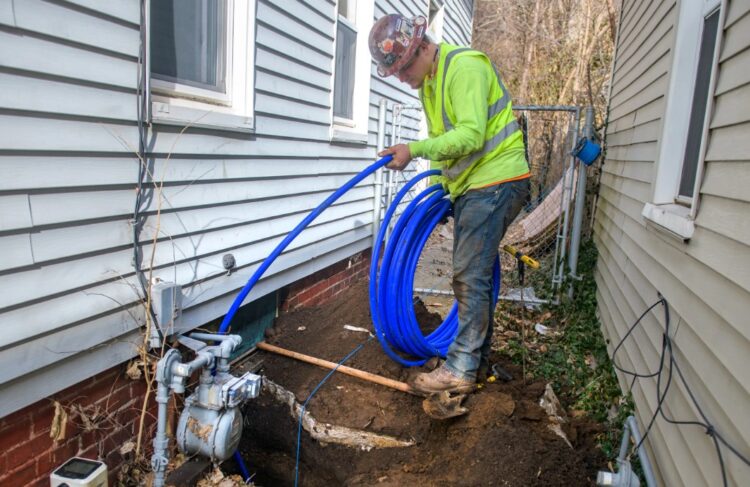
The environment around your home plays a crucial role in the health of your water lines. Seasonal changes, especially in areas with extreme temperature variations, can cause ground shifts, potentially damaging the pipes.
Be extra observant during transitional seasons. Also, pay attention after heavy rains. Soil erosion can expose or stress water lines, making them more susceptible to damage. On the brighter side, technological advancements are producing environmentally resilient materials. When replacing, homeowners might want to explore these newer options for added peace of mind.
Final Thoughts
Water line replacements, while daunting, are integral for maintaining a safe and efficient home. By arming ourselves with knowledge about the processes, costs, and best practices, we can ensure a smoother journey through this essential home improvement task.
By being proactive, understanding our environment, and choosing the best materials and professionals, we can secure the longevity of our water lines. After all, a well-maintained water system not only ensures our daily comfort but also safeguards the health and well-being of our families.
As homeowners, it’s our duty to stay informed, vigilant, and proactive, ensuring our homes remain the sanctuaries they’re meant to be.
 Hi Boox Popular Magazine 2024
Hi Boox Popular Magazine 2024
